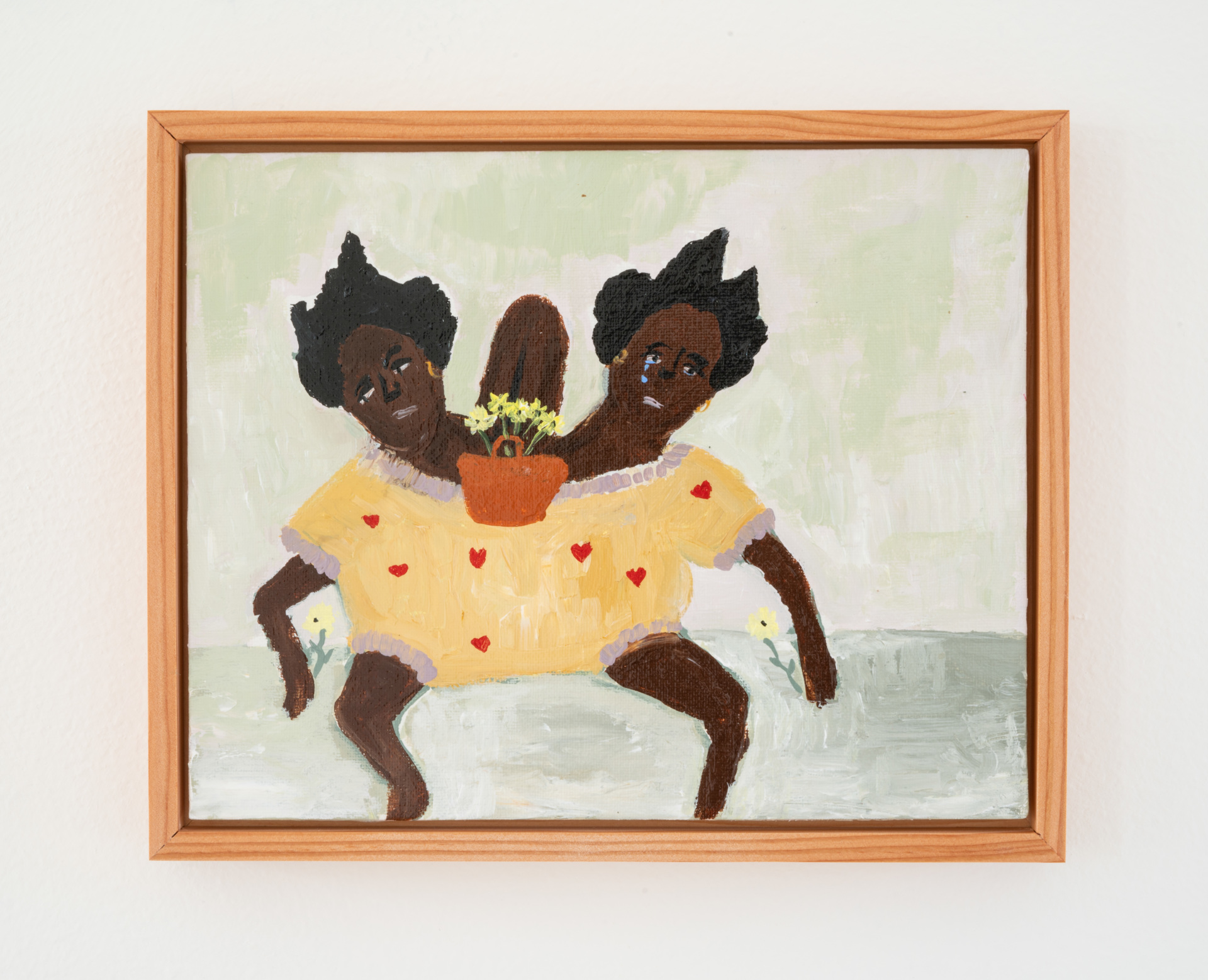Nina Johnson Gallery is pleased to announce that from May 22 to July 18, a group of small-scale works by Mozambican artist Cassi Namoda will be on display in a collection entitled Dog meat, cat meat, God-knows-what meat. Drawing from an intuitive reading of the proverbial African expression, Namoda offers tableaux rooted in something of a jazz sensibility—an intuition directed firmly toward the stylings of impromptu, fugitive arrangement.
Composed between a 2015 residency in Lamu, Kenya and Namoda’s studio in Long Island, New York, Dog meat, cat meat, God-knows-what meat represents both meditation and caprice; a sweet serenade and a eulogy also—tracking disparate geographies, metaphors, and imaginations.
The initial concern with format—small-scale painting—communicates a foundational sentiment for the collection: incarnation of the anti-monument, the anti-melody, and reinvestment in softness, obscurity, and aberrance. The notion of obscurity, or rather, opacity appears central in scenes like the title-piece, where Namoda depicts an ambiguous and organic wrestle between vague, monochrome animal figures; observation of the background in this and other pieces—a mélange of hazy brushwork layers—reveals the transfiguration of air itself into heady, saccharine gauze: a veil, or threshold of sorts.
Namoda’s exploration of ambiguity and of the threshold extends to her subjects, who exhibit their own obscure, visceral transfigurations: in lovers’ embrace, a woman’s mouth transforms into an emerald serpent and stares languidly at its beneficiary—coaxed from shetani witchcraft.
Elsewhere, family figures stand before a valley sunset in bizarre isolation, testament to Namoda’s own penchant for the compositionally grotesque. A man in ochre dress and cap grimaces with a rose in his mouth. At once he is familiar and romantic, though perhaps in his strange company he means to consume the flower in ritual or vague prostration.
Dog meat, cat meat, God-knows-what meat renders a transient subspace of dusk and deferral—perpetual estrangement. In coloration alone, initial softness and comfort of shade belie a warm, underbelly seething and sensuality. Namoda’s distant figures enmesh themselves in the contours of a queer borderland, perhaps as the custodians of its threshold—a pantheon of small, purgatorial martyrs and deities inscribed in bas-relief around a doorway. Conjoined twins sit in innocence atop a plush, white down with daffodils and embroidery hearts. Yet they do not hesitate to return the viewer’s gaze; their symbolic transfiguration is apparent, and yet their sharp self-exhibition jeopardizes the viewer’s endearments. In shaded, rhapsodic verse, Namoda veils the viewer’s safe passage with ciphers. Step toward the man hidden behind colored balloons and the girl in crutches and eyepatch, perhaps to discover fraternity, and perhaps to confront your own peripheries and transfigurations in the process.
About Cassi Namoda
Born in Maputo, Mozambique, as the daughter of a Mozambican mother and an American father, Cassi Namoda spent most of her childhood traveling around the world, being exposed to a variety of ideas, cultures, and stories. She would return to Maputo in her early twenties before permanently settling in Los Angeles. With dream-like elements and folkloric references, her painting calls forth an evocative and intimate recollection.











